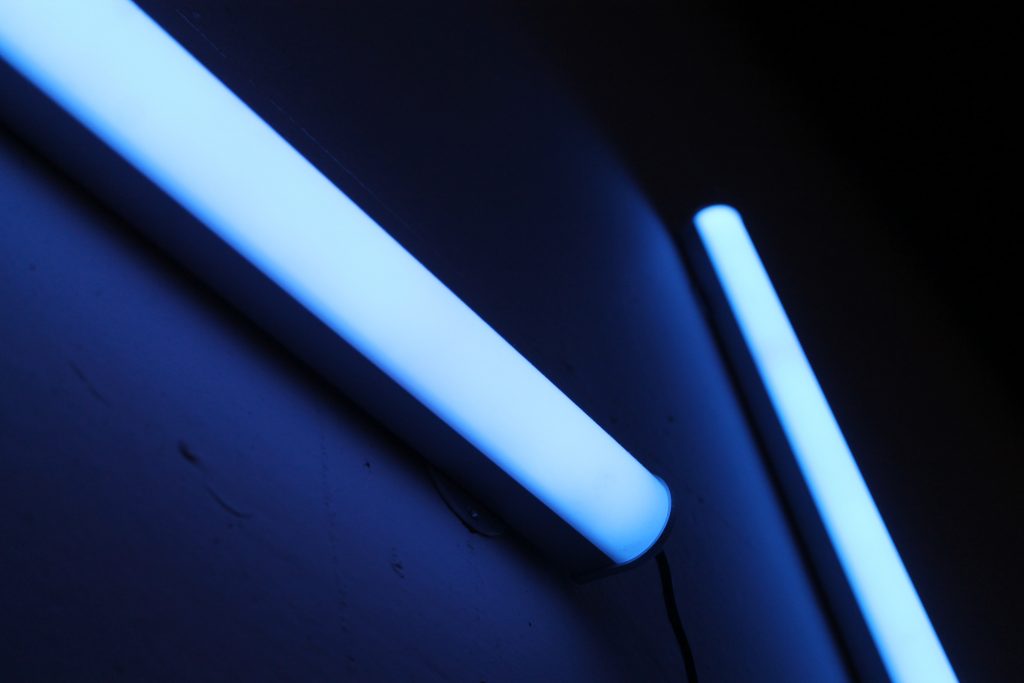


18 Jun 20

Does UVC really work for air purification?
The germicidal effect of UVC radiation has been known for over a century and even earned Niels Finsen a Nobel Prize in Medicine in 1903 for its use in the treatment of tuberculosis. UV radiation - invisible to the naked eye has been widely adopted for all kinds of uses such as sterilizing hospitals, sterilizing water, germicidal lamps in food establishments, and even curing nail polish faster. It damages the DNA of germs (bacteria, viruses and even molds) and inactivates them. So, how is it applied to improve indoor air quality in HVAC systems and what are the types of UV lights available? Does UVC really work for the effective purification of air?
What is UV radiation?
All radiation is a form of energy, most of which is invisible to the human eye. UV radiation is only one form of radiation and it is measured on a scientific scale called the electromagnetic (EM) spectrum. UV radiation is the portion of the EM spectrum between X-rays and visible light. The most common form of UV radiation is sunlight, which produces three main types of UV rays:
- UVA (wavelengths of 400 to 315 nm)
- UVB (315 to 280 nm)
- UVC (280 to 200 nm)
The optimal wavelength for inactivating microorganisms is 265 nm, and the germicidal effect decreases rapidly if the wavelength is not optimal. But the most studied wavelength is 254nm (low spectrum UVC) for its effectiveness against viruses.
How is UVC used in HVAC?
Ultraviolet light has germicidal properties. Microorganisms are deactivated by UV light by damaging the nucleic acids. Cellular DNA and RNA absorb the high energy associated with electromagnetic radiation.
UV light air purifiers are generally a combination of a forced air system and another filter (like a HEPA filter). As a result, the UV light of the air purifier acts together with other processes to clean the air. Ambient, in-house air is forced through the unit and ventilated through a chamber with bulbs emitting light within the UV-C frequency. The UV lamp is usually placed downstream of a filter in a portable air purifier.
Various factors can affect its performance:
- Relative Humidity: Increased relative humidity tends to decrease the rate of decomposition under UV exposure. However, relative humidity above 40 % reduces the survival of many viruses.
- Temperature: Air temperature has a negligible impact on microbial susceptibility to UV rays. However, it can have a major impact on the power of UVGI lamps if it exceeds the design values.
- Surrounding Air Speed: Operating a UVGI system at air speeds above design speeds will reduce UV output due to the convective cooling effect in the lamp.
- Shadows: Surfaces in these shaded areas do not receive adequate disinfection as UV light does not have the ability to reflect well from the surfaces.
- Distance: Distance also plays a factor in the efficiency of UV light. The strength of UV-C light decreases further away from the light source, following the law of inverse square. This means that at twice the distance, the UV-C will have ¼ of its power that was present at the original reference point.
UV-C lamps used in UV-C germicidal purifiers are silent, and the glow of many, depending on the casing mounted around it, is invisible to the human eye. They are generally odorless. UV bulbs may need replacing on a yearly basis, depending on the make and model.As far as applications for air-conditioning systems are concerned, the UVC lamp can be installed in the supply or return part of the HVAC unit.

Are UVC lights safe for humans?
The Ultraviolet Germicidal Irradiation (UVGI) technology does not use chemicals for disinfection. But its use in public environments is limited because UV exposure can be harmful to health. Prolonged exposure to the skin and especially continuous contact with unprotected eyes should be avoided, otherwise it may cause carcinogenic and cataractogenic effects.
However, researchers at Columbia University found that at a wavelength of 222 nanometers, UVC appeared to be harmless to humans and was still capable of killing viruses. At such frequencies, the rays cannot penetrate the surface of the skin or the eye, which would allow them to be used even in crowded spaces.
In addition, two case studies carried out respectively by researchers from Duke University Medical Center in 2012 concerning air quality in a hospital and NCBI in 1996 measuring the effectiveness of UV lamps in an office building proved the effectiveness of UVC in HVAC systems.
Airzone does not manufacture or distribute air purification or disinfection products. This article has been written for explanatory purposes, following the research on the five most common air disinfection technologies in the market: ozone, UVC, photocatalytic oxidation, ionization and electrostatic filtration.
Sources and links of interest:
- Directiva 2006/25/CE del Parlamento Europeo y del Consejo del 5 de abril de 2006, sobre las disposiciones mínimas de seguridad y de salud relativas a la exposición de los trabajadores a los riesgos derivados de los agentes físicos (radiaciones ópticas artificiales)
- Welch, D. Brenner, D.J et al. Far-UVC light: A new tool to control the spread of airborne-mediated microbial diseases. Scientific Reports volume 8, Artículo número: 2752 (2018).
- R. L. Riley and J. E. Kaufman. Effect of Relative Humidity on the Inactivation of Airborne Serratia marcescens by Ultraviolet Radiation. Applied Microbiology 1972 Jun; 23(6): 1113–1120.
- www.sciencedaily.com
- www.ncbi.nlm.nih.gov